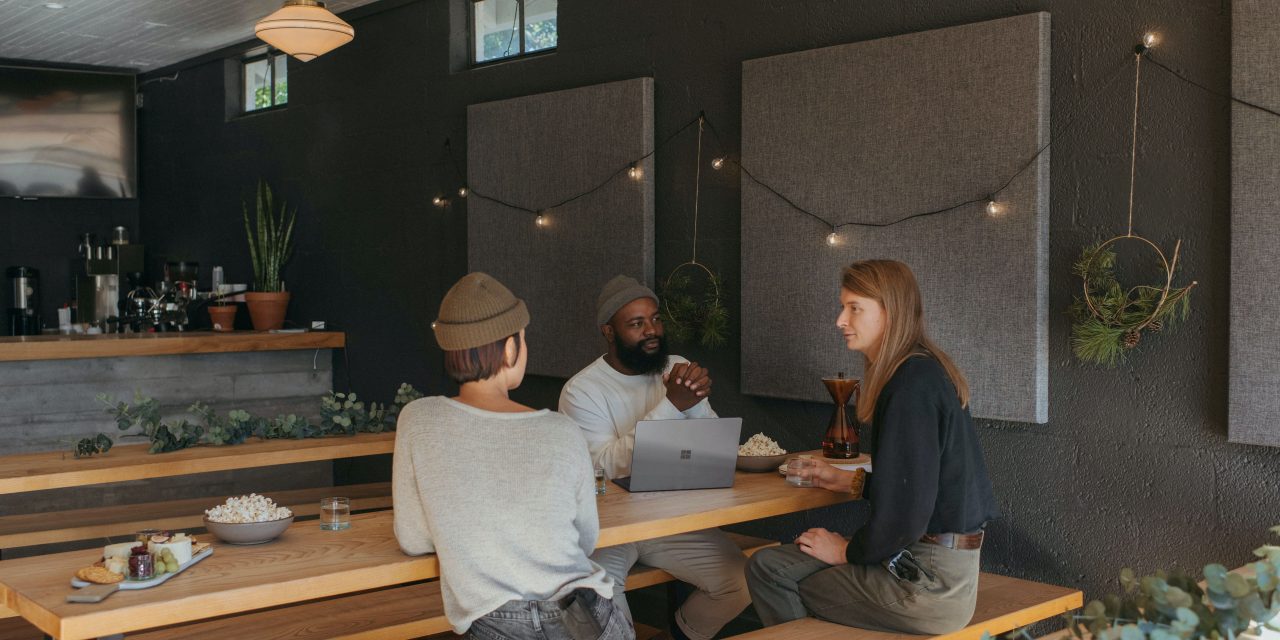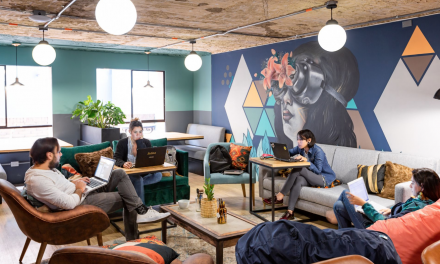To attract members, coworking space owners must understand a number of things about their target market.
While it’s important to know the obvious needs of your members, such as access to high-speed internet, comfortable seating, and meeting rooms, there are also many unspoken desires that can greatly impact a member’s satisfaction and loyalty to the space.
By reading between the lines and uncovering the unvoiced desires of coworking space members, operators can create a more tailored and enjoyable experience for their customers, ultimately leading to increased retention rates and word-of-mouth referrals.
In this article, we will delve deeper into the topic of discovering coworking space members’ unvoiced desires, and explore some actionable steps that managers can take to better understand and meet their members’ needs.
1. Promises Kept
As a coworking business owner, one of your primary goals is to attract and retain members. And while it’s important to market your space in a positive light, it’s crucial to avoid making promises that you can’t keep.
When showing prospective members around your space, it can be tempting to present it as the perfect solution to their needs, even if that means bending the truth or overselling certain features.
However, this approach can backfire in the long run, as members who feel misled or disappointed are likely to share their negative experiences with others, potentially damaging your reputation and hindering your ability to attract new customers.
Instead, it’s important to be honest and transparent about what your coworking space offers, as well as any potential limitations or drawbacks. By setting realistic expectations and delivering on your promises consistently, you’ll not only build trust with your members but also demonstrate your commitment to providing a high-quality experience.
2. Unwavering Support
As a coworking space owner, it’s critical to understand that members want more than just a physical workspace. They want to feel supported and valued throughout their journey, from the moment they first make contact with your space to the day they leave.
To provide the level of support that members need, create a customer-centric environment that fosters growth and continuous learning. This means providing resources and opportunities for members to develop their skills, network with others, and access support whenever they need it.

One way to achieve this is by ensuring that information about your space and its amenities is readily available on your website and social media pages. This can help prospective members make informed decisions about whether your space is the right fit for them and can also create a positive first impression of your business.
In addition, you’ll want to provide excellent customer service throughout every stage of the member journey. This includes being available to answer questions, address concerns, and provide guidance whenever it’s needed. Everyone on your team, from receptionists to janitors, should be trained to provide excellent customer service and contribute to a welcoming and supportive environment.
To streamline and enhance your customer service efforts, consider using technology to organize and automate member support. Many coworking apps and platforms offer features such as chatbots, ticketing systems, and self-service portals that can help members get the help they need quickly and easily.
3. A Spacious, Open, and Serene Space
As a coworking space manager, it’s important to strike a balance between maximizing capacity and creating a comfortable, productive environment for your members. While it may be tempting to pack as many people as possible into your space, doing so can actually have a negative impact on member satisfaction and retention.
To create a peaceful environment, ensure that your space is spacious, open, uncluttered, and calm. This means providing ample room for members to work, move around, and interact with each other without feeling cramped or crowded. It also means keeping the space free of unnecessary clutter, and creating a calming atmosphere that promotes focus and productivity.
Instead of packing more people into your existing space, consider starting a new location or expanding your existing space to accommodate more members. This can help you maintain a comfortable and productive environment while still growing your business.
By creating a spacious, open, uncluttered, and serene environment for your members, you’ll not only enhance their productivity and satisfaction but also build a strong and loyal community that will help your coworking space thrive.
4. A Strategic Schedule for Achieving Success
Coworking spaces are becoming increasingly popular as more people embrace the freedom and flexibility that comes with remote work. However, coworking spaces need to do more than just provide desk space and Wi-Fi to keep their customers happy.
Members expect a coworking space that helps them achieve their goals, and this requires a schedule that enables them to stay on track, manage their time efficiently, and accelerate their success.
To meet these expectations, coworking space managers need to offer more than just a place to work. They must understand their customer’s work styles and provide a flexible schedule that accommodates them.
Some customers may need a quiet space to work on their projects during traditional work hours, while others may prefer working late into the night. Providing a variety of options for customers to choose from will make them feel supported and valued.
Additionally, operators can help their customers create a schedule that establishes the structure required to ensure they realize their objectives. This could involve setting deadlines for specific tasks, providing reminders to stay on track, or even organizing events that encourage collaboration and learning.
By providing these additional services, coworking space managers can help their customers stay focused, motivated, and on track to success.
5. Unlocked Synergy
Collaboration is a hallmark of coworking spaces, yet not all customers take full advantage of this aspect of coworking. As a coworking space manager, it’s your responsibility to provide opportunities for collaboration and motivate your customers to take part.
One way to encourage collaboration is by organizing events that bring your customers together. These events can range from social gatherings to workshops or training sessions that teach new skills. Events like these allow customers to meet and network with like-minded individuals, sparking ideas and opening up new opportunities for collaboration.
You can also create mentorship programs that pair customers with more experienced professionals in their field. These programs give less experienced customers access to valuable knowledge and expertise that can help them accelerate their progress.
It’s important to note that collaboration is a two-way street. Customers must be willing to participate and contribute to the collaborative environment. You can motivate your customers to collaborate by recognizing and celebrating successful collaborations.
Highlighting the benefits of working together can encourage customers to be more open to collaboration, leading to more successful partnerships and an overall more vibrant and supportive coworking community.
6. Moving from a Rigid Mindset to a Creative One
In order to foster a creative and innovative environment, coworking spaces must encourage and facilitate a transition from rigid thinking to creative exploration. This means that managers and owners must intentionally design the space to inspire and support creativity.

One way to achieve this is by creating spaces that are not just conducive to work but also to relaxation and contemplation. Coworking spaces should provide areas for workers to step back from their work and reflect on their goals, ideas, and sources of inspiration.
In addition, coworking spaces can also facilitate creative exploration by encouraging open communication among members. Managers should promote a culture where members feel comfortable sharing their ideas and seeking feedback from others.
Furthermore, coworking spaces should be designed to promote serenity and magical connections. The environment should be welcoming and inclusive, and workers should feel a sense of belonging and community. By creating a culture that values and supports creativity, coworking spaces can become a hub for innovation and growth.
7. Embrace the Lifestyle, Not Just the Space
A coworking space is not just a physical location, but also a community and a lifestyle. To create a successful coworking space, managers must understand their customers’ needs and aspirations beyond their work.
Coworking space owners and managers can create a sense of community by providing opportunities for their customers to connect and build relationships. This could be through social events, networking opportunities, or even just providing a comfortable lounge area where customers can socialize and relax.
Moreover, a coworking space should reflect the values and lifestyle of its customers. If the coworking space caters to creatives and artists, the space should be designed with an artistic flair and provide resources such as art supplies and a gallery space.
Incorporating the customers’ lifestyles and passions into the coworking space will make them feel more connected and invested in the community. It will also attract like-minded individuals who share similar values and aspirations, leading to a thriving coworking space.
8. Transition from Spectator to Participant
Creating an environment where customers feel valued and included is crucial for a coworking space to thrive. One of the ways to achieve this is by encouraging active participation over passive observation.
When customers feel like their input is not being heard, they may begin to feel disconnected from the space and look for alternative options. To avoid this, coworking space owners and managers should actively seek feedback from their customers and consider their suggestions for improvements.
By involving customers in the process of improving the coworking space, they become stakeholders and feel a sense of ownership over the space. This creates a positive relationship between the customers and the space, leading to higher retention rates and more word-of-mouth referrals.
For example, if a customer suggests adding more greenery to the space, the space owner can involve the customer in the selection and placement of the plants. This not only improves the aesthetic appeal of the space. but also fosters a sense of community among customers who worked together on the project.
Wrap Up
In conclusion, creating a coworking space that caters to the unvoiced desires of members requires a thorough understanding of their mindset and aspirations.
While implementing the eight tips discussed in this article can help managers create an environment that fosters productivity, creativity, and collaboration, it’s also crucial to ensure that the coworking space’s physical design and structure align with the customer’s view.
By investing in a workspace that is not only functional but also interesting and attractive, coworking space owners can create a vibrant community of active participants who feel a sense of ownership and pride in their shared workspace.









